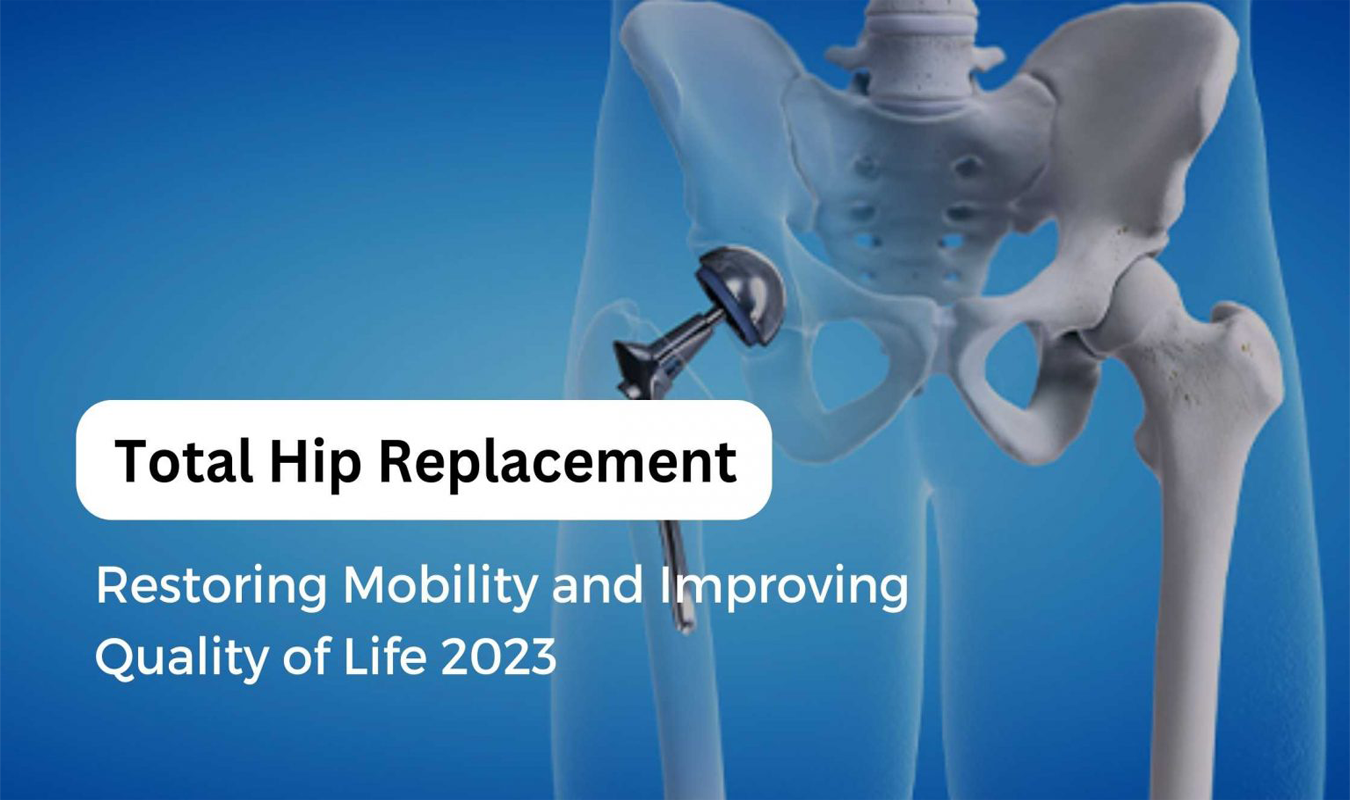
Welcome to our blog article, where we will discuss a topic that has given those suffering from chronic hip pain fresh hope – complete hip replacement. We will look at the transformative nature of total hip replacement, its benefits, the surgical method, and the recuperation period in this detailed post. So, let us set out on a path to regain mobility and improve our quality of life!
Understanding Total hip replacement, also known as hip arthroplasty, is a surgical treatment that replaces damaged or diseased portions of the hip joint with artificial components. These components have been meticulously engineered to mimic the natural function of the hip joint, allowing for more mobility and decreased pain.Total Hip Replacement Advantages
Pain Relief
The primary goal of total hip replacement is to relieve chronic hip pain that has not been relieved by previous treatment choices. The operation can drastically lessen or eliminate pain by replacing damaged joint surfaces, allowing sufferers to continue their everyday activities without difficulty.
Restoring Mobility
Chronic hip pain frequently hampers movement and makes basic activities difficult. Total hip replacement can restore joint function, improve range of motion and allow people to walk, climb stairs, and engage in physical activities more easily.
Improving Quality of Life
Chronic hip pain can have a significant influence on one’s overall quality of life, interfering with jobs, hobbies, and even personal relationships. Total hip replacement has the potential to significantly enhance the quality of life, allowing individuals to regain independence and live pain-free lives.
Total hip replacement surgery is often performed under general or regional anesthesia. An incision near the hip joint is made during the treatment, and the diseased bone and cartilage are methodically removed. The artificial components are then securely implanted, including a metal stem injected into the femur and a socket inserted into the pelvis. The incision is closed after the procedure, and the recuperation process begins.
The Healing Process
Recovery from total hip replacement surgery demands perseverance, commitment, and active engagement in rehabilitation. Physical therapy is essential in the healing process, assisting patients in regaining strength, flexibility, and mobility.
Assistive equipment like crutches or walkers may be required at first, but as healing proceeds, patients eventually move to walk alone. The recovery period varies depending on the individual, but with good care and adherence to post-operative recommendations, most patients see considerable improvement within a few months.
Conclusion
Total hip replacement has emerged as a ray of hope for people suffering from persistent hip discomfort. This surgical surgery has changed the lives of many people by providing pain relief, regaining mobility, and improving the overall quality of life.
If you have persistent hip discomfort that interferes with your everyday activities, speaking with a knowledgeable orthopedic surgeon in Gurugram can help you determine if complete hip replacement is the best option for you. Remember, with total hip replacement, you can begin the process of regaining mobility and improving your quality of life.

